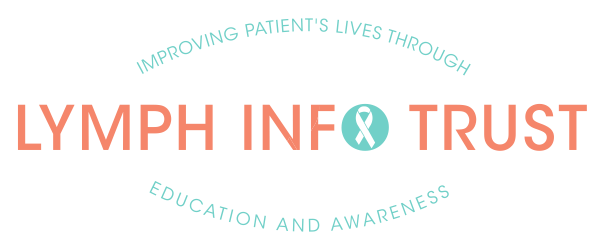Lipoedema is a life-long fat deposition disorder that affects up to 11% of women. Lipoedema is not well recognised, nor is it well understood. Some people with lipoedema are misdiagnosed as being overweight.
Effect of Lipoedema on Quality of Life
Lipoedema can negatively affect a woman's emotional and physical well being. The condition can be severe and disabling. Some sufferers can lose their independence and become isolated. Other health problems can develop alongside lipoedema.
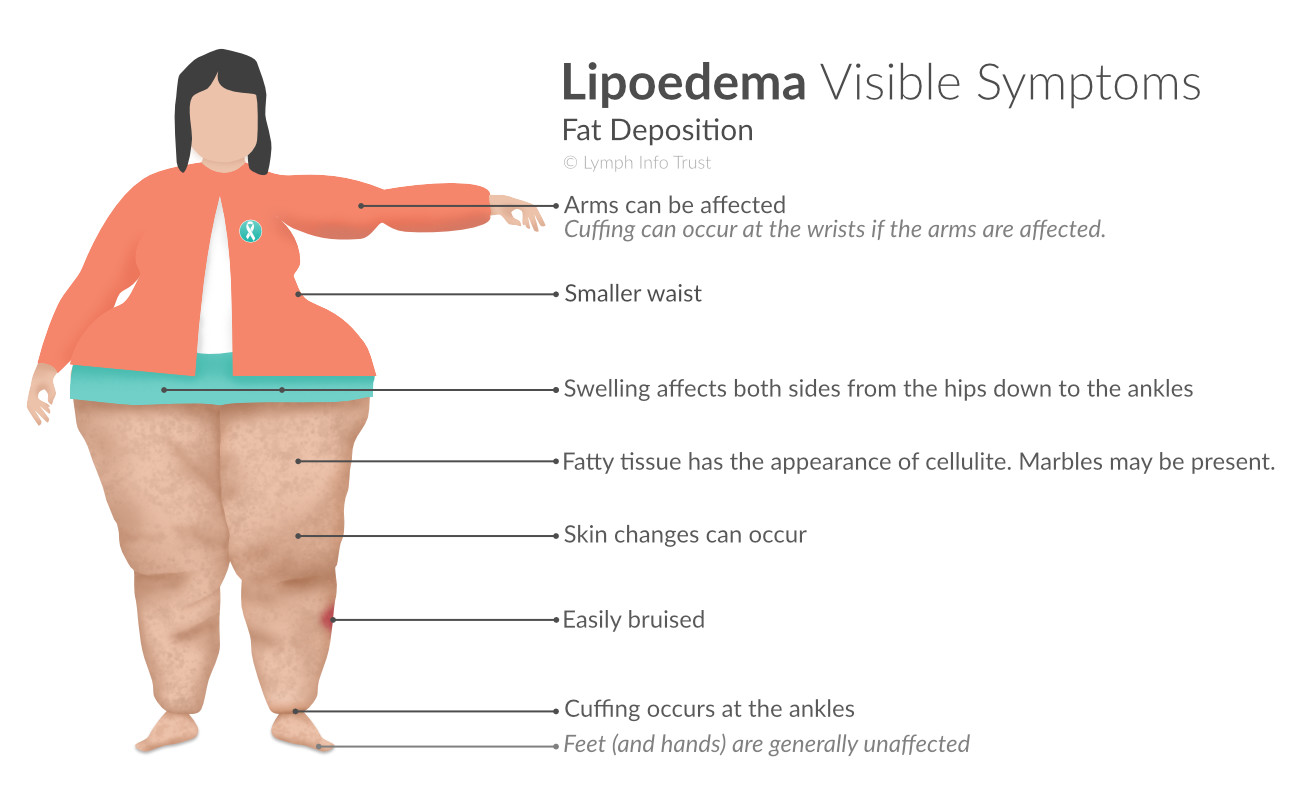
Heat and hot weather may worsen symptoms.
Underlying Causes of Lipoedema
Lipoedema is congenital, which means that if someone has it, that person will have been predisposed to lipoedema from birth. There is a strong link between genetics, family history and hormonal milestones. Symptoms typically develop during the teenage years.
Hormonal changes can trigger or worsen lipoedema during:
- puberty
- pregnancy, or
- menopause.
Note: In late pregnancy, the uterus can press down on the veins of the pelvis. This can cause legs and ankles to swell. This is common and it should clear up after giving birth. Even though it is not a cause for concern, please discuss any swelling with your doctor or lead maternity carer (midwife).
Inflammation and metabolic conditions may also trigger lipoedema.
Diet & Exercise
Weight-loss efforts (diet and exercise) may have little or no impact on the affected areas of the body. The deposited fat cells are different from 'normal' fat cells. As a result, the upper body may be a different size to the lower body. For example, the person might be a size 12 on her upper half, but have size 18 hips and buttocks.
Lipoedema Symptoms
The symptoms of Lipoedema include:
- swelling in the lower part of the body from the hips down to the ankles.
Note: Both sides of the body are affected. The arms may also be affected. Feet (and hands) tend to remain unaffected. There may be a "cuff" at the wrists or ankles that resembles 'harem pants'. - a waist that is much smaller and out of proportion to the affected areas
- affected areas are cold to the touch
Note: This may be owing to the extra fatty tissue and excess fluid. - fatty tissue has the appearance of cellulite
Note: This tissue is often described with words like 'lumpy' or 'wobbly'. Soft, loose connective tissue and fat (marbles) may be present. - tenderness when touching the affected legs/arms
Note: Affected areas may be very sensitive and painful to touch. - easily bruised skin/tissue
Note: Compared to Lymphoedema, there is less risk of infection. Cellulitis can still develop from Stage 2 onwards. - joint pain, particularly in the knees, and
- very flexible joints (hyper mobile joints).
Heat and hot weather can worsen the symptoms.
Developmental Stages of Lipoedema
There are four recognised stages of lipoedema. The stages are:
- Stage 1: Skin Thickening
- Stage 2: Orange Peel Skin
- Stage 3: Pronounced Size Difference
- Stage 4: Lipo-Lymphoedema
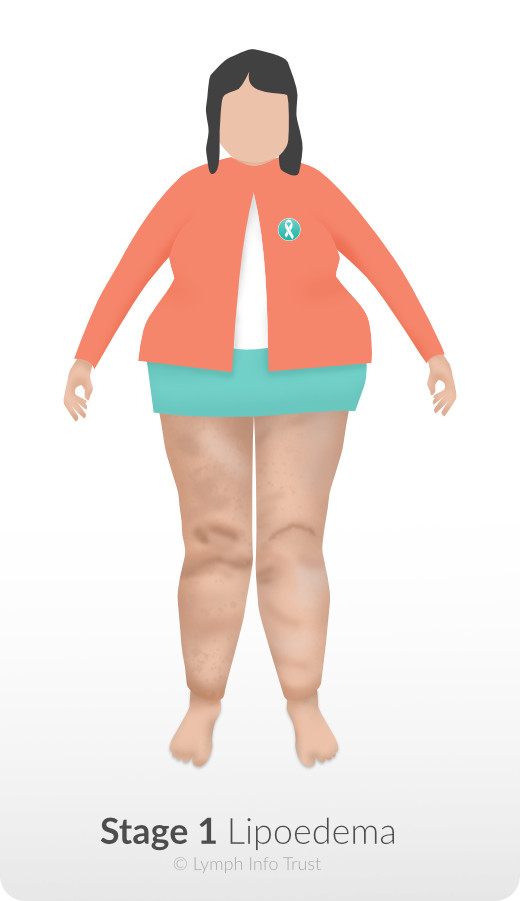
Stage 1: Skin Thickening
During Stage 1, the skin thickens. It is smooth and even.
Swelling may reduce while resting. Swelling may also reduce when the legs are elevated.
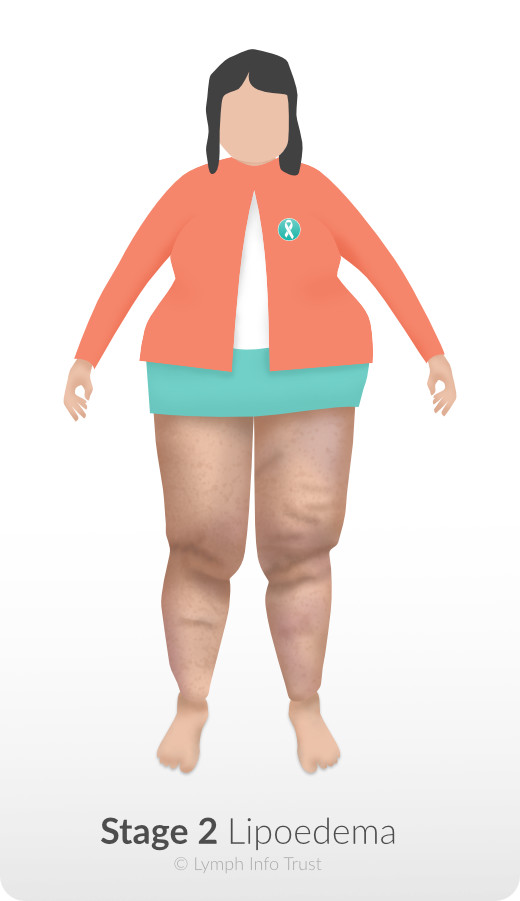
Stage 2: Orange Peel Skin
Swelling may no longer reduce when elevating the legs.
Orange peel skin develops and feels uneven.
There may be nodules or lumps under the skin ranging from the size of a walnut to the size of a tennis ball.
There is a risk of skin conditions and infections, including cellulitis.
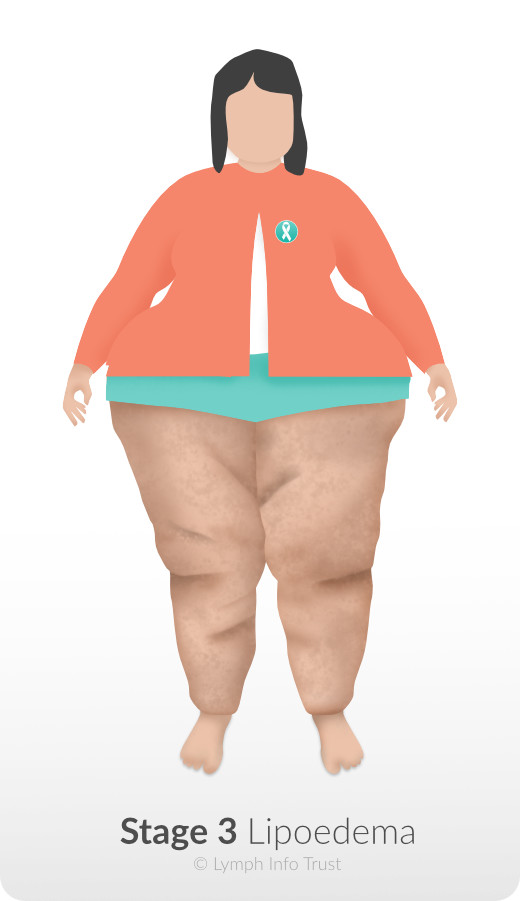
Stage 3: Pronounced Size Difference
The difference in size is now more pronounced.
The skin is harder and may overhang.
The swelling doesn't go down after resting.
Note: Lipoedema at Stage 3 is harder to treat and manage.
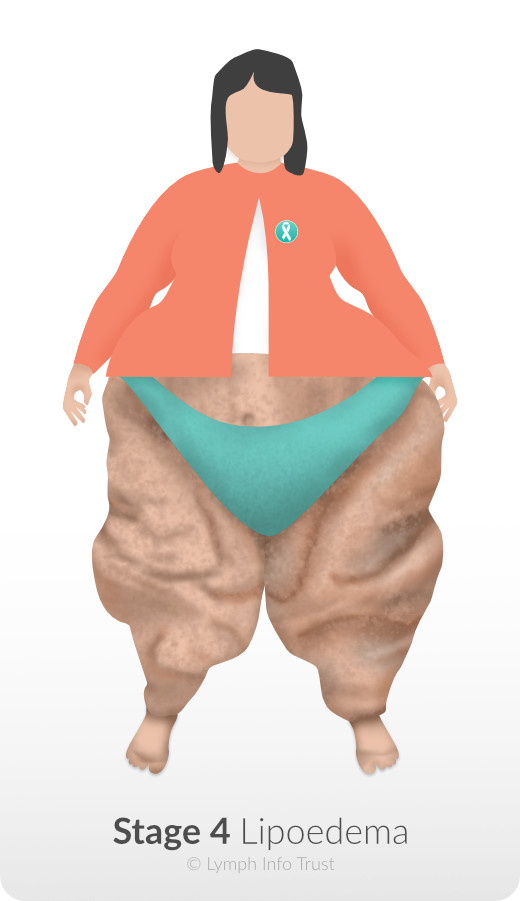
Stage 4: Lipo-Lymphodema
At Stage 4, the symptoms worsen because of excess fat tissue pressing down on the lymphatic vessels. This makes it difficult for the lymphatic system to do its job.
Stage 4 is often referred to as lipo-lymphoedema because lymphoedema is now a part of the condition.
An early symptom of lipo-lymphoedema is the formation of pitting. A pit is a smooth crater-like depression in the skin. Pits tend to form around the ankles. Pitting is a symptom of lymphoedema in its early stages.
Treatment / Management of Lipoedema
There is neither medication nor treatment that will cure lipoedema.
Lipoedema is a lifelong chronic condition. Treatment manages the symptoms and prevents the condition from getting worse. Women with lipoedema must learn to manage diet and exercise.
Note: Any weight loss will be limited to parts of the body that are unaffected by lipoedema.
The first approach should be Combined Decongestive Therapy; the same treatment as for lymphoedema.
Lipoedema can be treated surgically. Liposuction may be an option. Surgery should only be performed by a surgeon who specialises in the treatment of lipoedema.
Possible Complications of Lipoedema
Ambulation / Walking Difficulties
It's common for women with lipoedema to develop problems with the hips, knees and ankles. This is because excess fat tissue changes the way a person moves and walks.
Venous Dysfunction & Phleboedema
Damage to the blood vessels can occur. This can lead to venous dysfunction, and eventually chronic venous insufficiency (phleboedema).
Lipoedema, Lymphoedema and Phleboedema
Lipoedema, phleboedema and lymphoedema can together create significant problems with a person's health, mobility, independence and quality of life.
Useful Links
For more information, please check out the following resources:
- Lipoedema New Zealand
A private Facebook group providing support for the education, inspiration, health enhancement and empowerment of women who have lipoedema. - Lipoedema Australia
A volunteer-based organisation that is dedicated to improving the lives of those affected by Lipoedema through education, advocacy and support. - Lipoedema UK
Lipoedema UK work to raise awareness of Lipoedema in the UK and work with the Royal College of General Practitioners to train doctors, nurses and all health professionals to recognise and diagnose the condition. - Lipedema Project
The Lipedema Project is a US-based non-profit organisation devoted to increasing awareness and providing education, research, and treatment for lipoedema through online and face-to-face programs and building community. - Fat Disorders Resource Society
The Fat Disorders Resource Society (FDRS) is a US-based organisation dedicated to improving the quality of life for all people affected by adipose tissue disorders. FDRS support research, education, advocacy, and collaboration. - Lipoedema Dietary Suggestions
Dietary Suggestions which may help you better control lower Limb Lipoedema (PDF | 200kB)
- https://lipedemaandme.com/
A blog for women with Lipedema, written by a woman with Lipedema
